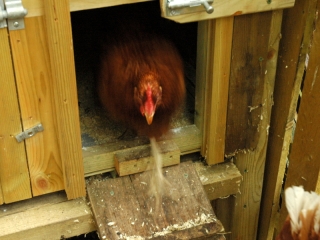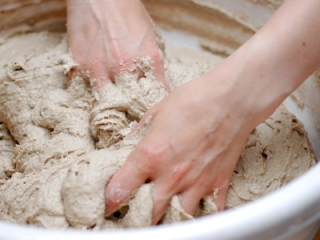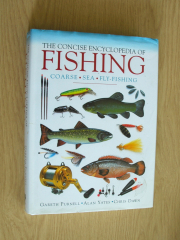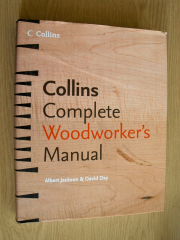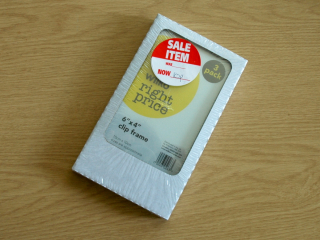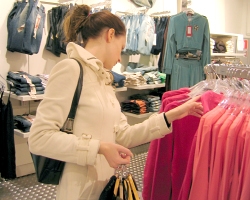£100 for lie-ins: to get an automatic chicken door or not?
Since we got the chickens in June, I’ve been thinking, on and off, about getting an automatic door for their pop hole. Light-sensitive, it’ll open first thing in the morning and close again after they’ve put themselves to bed when it gets dark. It’ll allow the chickens to live to natural rhythms rather than our rhythms, and in the winter, it’ll mean they get the maximum daylight possible.
But we don’t really need one.
Left to our own devices, we stay up late and sleep late. I list “sleep” as an active hobby: I like the feeling of lying down, of being snuggly warm, and my vivid often lucid dreams are engrossing, often interactive, movies personalised for an audience of one. And nothing beats a lazy morning in bed, surrounded by animals, and reading a good book. Sadly that sort of lifestyle isn’t conducive with having a dog, let alone chickens and while I’m quite adept at running down to the coop in my robe, then jumping back into bed for a couple more hours of snoozing, it just isn’t the same. To be fair, we do get up in good time during the week but to not have to get up that early on weekends or days off, that would be great. An automatic door opener would allow us to wake up in our own time then go down to check on the chickens after breakfast.
But we don’t need to have lie-ins, we just like them.
Read MoreBaking things that’ll last
I love baking bread, cakes and biscuits – the process is fun, the product is tasty and it’s very often cheaper than buying them ready-made from a supermarket. But I don’t have the time to bake every day at the moment – and that often results in having to buy expensive, pale imitations of nomminess, and sometimes food waste too.
Our slow rise bread is great – it’s edible as long as there is any to be eaten. Because it’s not quite so fluffy as supermarket bread, it doesn’t feel as instantly stale and it’s fine as fresh bread for three days or so, then good for toast for a couple more days. Other baked goods though – scones, cakes, biscuits – tend to be lovely on the first two days but then quickly stale – either going soggy or hard depending on which is undesirable in the item.
So what do you do to make sure your baked good will last until you can bake again?
Airtight containers (typically old ice cream tubs) don’t seem to help that much – perhaps with biscuits (cookies) I need something else in there to absorb the moisture… rice perhaps?
Freezing breads & cakes is a possibility – anyone got any preference to freezing them before or after baking (or part-baked)? I keep meaning to freeze homemade pizza dough – it can be frozen at any stage from after kneading or rising, through to full prepared pizza – does anyone have any preferences for freezing at any particular stage?
As for biscuits, I like the idea of making a roll of dough, which is then frozen and sliced & baked on demand (like for these Earl Grey tea thins) – but with all this breads, cakes and pizza dough, I suspect our freezer will quickly fill up! So what are your favourite longer-life biscuit tricks?
Any thoughts, recipes, suggestions etc would be gratefully received!
(Photo by hisks)
Read MoreUsing expensive freezer real estate efficiently
 I’m all about space efficiency.
I’m all about space efficiency.
Our last house was so filled to bursting by the time we moved out that we had to be efficient. Shelves everywhere. Storage units/boxes everywhere. Sometimes I think the cats were lucky they weren’t attached to harnesses and hung from the ceiling to save floor space. We nearly cried when we moved here: cupboards can be opened without all their contents spilling out, there are shelves that are empty save for an ornament or two, and each room has space for me to dance the tarantella with the cats (the closest I get to spinning them around) – but there are still a few spots where space is not so cheap & plentiful. The kitchen in general is pretty packed – it’s the smallest room of the house (save for the understairs cupboard) and since we cook, bake & preserve, we use it a lot for a lot of different purposes. However, it’s the fridge and freezer where we feel the squeeze the most – two small under-cupboard appliances – which are always crammed full.
A few weeks ago, some of our favourite ice cream was on buy one get one free but we couldn’t get any because we didn’t have any freezer space. It was then when we realised we weren’t making particularly good use of our precious freezer real estate. One of the drawers – nearly a third of the total space – was filled with a huge lamb joint we’d got super-super cheap, some cheap burger buns bought on BOGOF and a bag of ice which someone brought to our party at New Year, which we’d barely touched. The first two items were themselves bargains but had both sat in there for weeks; the ice was just taking up space — and all three things were costing us money to store and stopping us benefiting from other bargains.
We now have a new usage policy regarding the freezer: we’re not regarding it as a deep freeze for long term storage any more. We’re using it as a way to extend the life of something fresh by a few days – a fortnight at most – but not for storing things for longer than that (with the exception being my small pots of chillis and spring onions – bought in bulk, sliced up and frozen they don’t take up much room but save us buying fresh all the time). Aside from bagels (which freeze well and are a great emergency-lunch bread), we’re not freezing bread and no more buying things – whether bargains or not – especially for the freezer unless we have a specific exit plan for them, ie, we’ll eat them within a fortnight. We’re also not storing any more than a tray of ice except in exceptional circumstances (namely, a big party).
It’s early days in the new policy so I’m not sure how it’ll pan out – we’re brilliant at forgetting about things in there – but it’s worth a shot. I think the most important thing is to be aware that it can be a black hole for food, and the longer food stays in a freezer the more likely it is to end up as food waste, because of freezer burn, it acquiring that cardboard-y taste or changes of taste.
How do you use your freezer efficiently? Do you have any tips for maximising the limited space? Is there anything you just won’t freeze – or anything you obsessively do keep in there?
Read MoreFree photo printing or actually get paid to print your photos
At the end of yesterday’s bargains post, I mentioned filling our new 30 clip frames with free photo prints.
I’m not a fan of printed-at-home photos as even with the best desktop printers, the quality is usually poor and the ink is so expensive too so we look to professional printers whenever we want some pictures printed out.
The other day John discovered that we qualify for 50 free photos a month as part of our Broadband subscription. It sounds like the offer is only for a year but that’s 600 photos in total so not to be sniffed at.
Free is, of course, good but actually getting paid to print your photos is even better: I got paid £3.49 and 50 free prints from Photobox earlier in the summer.
Photobox gives all new customers 50 free 6×4 prints, you just have to pay postage and packing of £1.49. When I signed up though, they were also giving away £5 for every new signup through TopCashBack – so even after p&p costs, I was in profit.
Read MoreBargain books and photo frames
Hope everyone had a lovely long weekend – we continued our fun/unfun activities from earlier in the week: blackberrying in the gentle rain (and then having to give up half my harvest to horses, to get them to let us out of their field) & relaxing on Saturday, 10 hours of decorating at the old house on Sunday, then our normal Sunday chores/lazing on Monday.
I made a few bargainacious purchases. First up, two books from a charity shop in Shipley:
Since my September will include both a first time fishing experience and a stretching of my limited woodworking skills (I want to make more planters and maybe a bench), these finds were both well timed. There were a number of similar fishing encyclopaedias available but this one, for £2, looked about the best. I suspect I can find a lot of this information online but I like browsing through books as an introduction to the subject.
At £5, the woodworking book was a little more expensive than I’d usually spend on a book at a charity shop but aside from the glue smear on the front, it looks brand new and has an RRP of £30 (Amazon has it for just under £18). Again, I could have found a lot of the information online for free but I’d much rather take a book outside for reference while working on something than my laptop.
Finally, while buying sugar soap & scrapers from Wilkinsons on Sunday, I spotted some basic clip frames on their super-sale shelves.
I really like the idea of having a lot of photos up on a wall but nice wooden frames are so expensive when you’re thinking about buying 20 or 30 at a time. Clipframes are obviously a lot not quite as pretty but far cheaper – these were frightening cheap to start with (at 60p for three) but in the clearance bay, disturbingly cheap at 10p for a pack of three. I bought all ten packs on clearance – 30 clip frames for £1. Now to fill them with some free prints…
Read MoreHow can you tell when something is good quality?
This is another cross-post between The Really Good Life and my recycling blog, How Can I Recycle This?
The first stage of the recycling triangle is Reduce – reduce the amount of things you buy/use and buy items that’ll last and can be repaired rather than ones that need replacing frequently. A key rule of frugal living is similar: don’t pay twice for something – a more expensive quality item might last two-three-four-times longer than the cheaper alternative.
But how can you tell when something is good quality – that it’s worth the extra money and it’ll last?
Back in the day, it used to be all about price – better quality items made with better quality materials cost more. But the rise of all powerful brands put an end to that. Now poor quality items made from poor quality materials command a huge price if they’ve got the right logo on them. And once respected brands have lowered their quality, or spun off lower quality ranges, without dropping their prices, hoping we won’t notice the difference. I’ve used a picture of clothes because the fashion mark-up is really obvious with them, but it’s an issue across the board: clothes, food, homewares, tools, electronics, cars, cleaning products…
Whenever we’re making major purchases, we look up reviews online/tap the expertise of friends on Twitter to ask their opinions but people have a habit of suggesting the thing they have/use rather than the best thing: partly because it’s often all they have experience of and partly because the more people who join them helps justify it’s their decision. Most people I know have their own area of expertise – for example, I know a lot of geeks and they know from painful experience what computers should be bought and what should be avoided like the plague – but outside their area of knowledge, they’re at a bit of a loss.
So how do you tell what’s good and what isn’t? What cues tell you when something is worth the extra money? And when it definitely isn’t?
Do you have a particular area of expertise? If so, tell us all about it!
Read More


